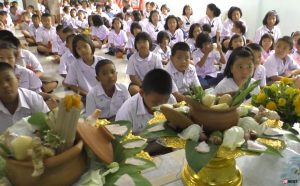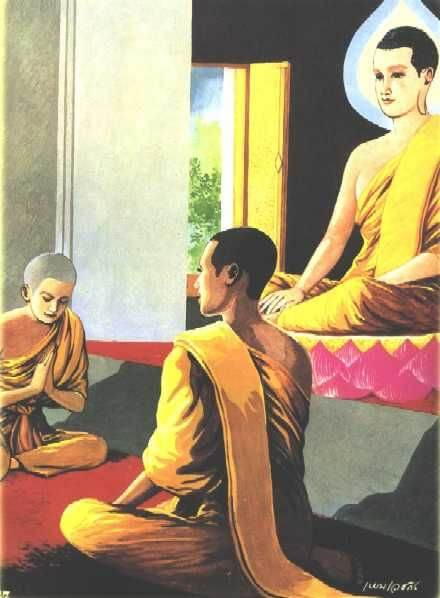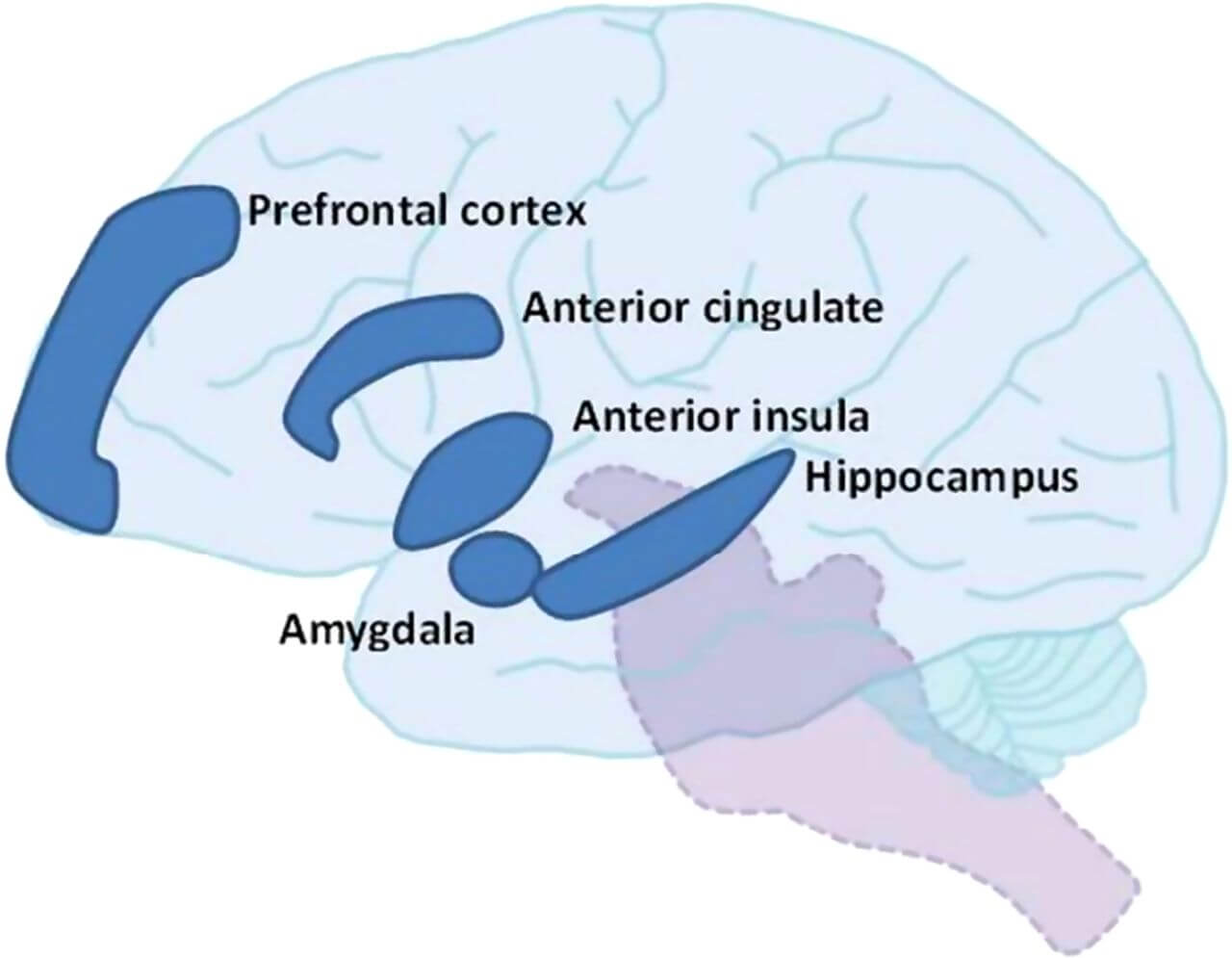The Buddha’s Teachings for Children: Buddha’s Wisdom Meets Science on Child Development
Contents


(Thai students gather in a function, credit: https://bit.ly/3HlvGc4)
Introduction
Like many countries in the world, Thailand annually celebrates Children’s Day in January in recognition of the importance of children who are the future of our nation. It is also a day for us adults to express our love, kindness, and care for children. There are many activities for them to enjoy and learn on the second Saturday in January. This year 2024, Thai Children’s Day (wan dek = วันเด็ก in Thai) will fall on 13 January 2024.
On this year Children’s Day, I have a special gift for children: a chance to learn from two amazing sources: the timeless wisdom of the Buddha and the amazing discoveries in child development.
The Buddha: imagine a teacher who’s super wise, kind, understanding, and always calm. That’s the Buddha! He can show you how to stay in control even when things get tough.
Science: think of scientists who spend their days figuring out how kids grow best. They’ve learned tons about what helps children thrive in our modern world.
By combining these two awesome sources, you can:
– Unlock secrets for your own happiness and success.
– Use those same secrets to make others happy and successful too.
The Buddha
 (Temple marking birthplace of the Buddha at Lumbini, Nepal, credit: Nepal Embassy, Bangkok)
(Temple marking birthplace of the Buddha at Lumbini, Nepal, credit: Nepal Embassy, Bangkok)
The Buddha is a historical figure who lived in Northern India about 2600 years ago. Before earning the revered title “Buddha” – “the enlightened or awaken one” -, he was a prince called Siddhattha (sometimes spelled Siddhartha), who got married with Princess Yasodhara at 16 years old and had a son – Rahula. Siddhattha’s father ruled a tiny Shakyan country in present-day southern Nepal and northern India, near the Himalayas in the modern-day Indian subcontinent. Siddhattha was fascinated with spiritual matters more than political ones. At the age of 29, he convinced his parents and wife to allow him to become an ascetic in search of the “Path” leading to ‘no more death’ or ‘no more rebirth’ and ‘supreme happiness’ (Amatadhamma in the Pali language). He promised them that when he has found the “Path”, he would return to them[1] to have them benefit from his discovery (to learn more, click here), and left the palace.
After attending various Vedic schools and going through intense meditation practice, he found the Path at the age of 35. After that, for the next 45 years, he traveled all over to teach and advise people on how to live wisely so that they can live a happy and successful life that would also be beneficial to other all beings in the world. He died at the age of 80 in present-day Kushinagar, India. At the place where he died a house was erected as a memorial.
The Buddha’s Son Rahula
 (The Buddha and son Rahula in Thai painting style, credit: https://yhoo.it/3sSDgHh)
(The Buddha and son Rahula in Thai painting style, credit: https://yhoo.it/3sSDgHh)
As mentioned above, the Buddha had a child named Rahula. The Buddha loved Rahula very much – as much as he loved Devadatta – his rival cousin, and Angulimala, a reformed thief, and everyone else he encountered during his 45 years of preaching. After attaining enlightenment, the Buddha himself taught Rahula, and later placed him under the good guidance of his chief and wisest disciple Sariputta.
What Did the Buddha Teach Rahula?
 (The Buddha teaches his son Rahula, credit: https://yhoo.it/3mNVoy8)
(The Buddha teaches his son Rahula, credit: https://yhoo.it/3mNVoy8)
The Buddha’s teachings to Rahula is mentioned in many places in the Pali canon. In brief, it is written that in the year following his enlightenment, the Buddha returned to Kapilavastu city for the first time to see his parents and his family. This is to fulfil his promise to them before leaving that he would share with them his Enlightenment. During this visit, Princess Yasodhara, took Rahula to see the Buddha, which was the first time father and son met in seven years. On this occasion, Rahula – encouraged by his mother – repeatedly asked for his inheritance from the Buddha. The Buddha, having no gold or property but only teachings (Dharma in Pali) to give, had Rahula ordained as a young monk (Samanera in Pali).
Immediately after Rahula’s ordination the Buddha instructed him on the ways of the Path. For example, the Buddha preached to his son who was just seven years old that he must never lie, even in jest. The Buddha said that speaking the truth is the highest idea, as those who feel no shame in intentionally lying will be able to do all types of evil. He also advised Rahula on how to be truthful, and that he can act with body, speech, or mind only when it will not harm himself or others.
Rahula was trained to follow ten laws of the monastery (precepts or Vinaya in Pali). When he grew up and developed mentally, emotionally, and intelligently enough, the Buddha taught him meditation, as mentioned in Maha-Rahulovada Sutta: The Greater Exhortation to Rahula. In essence, here the Buddha taught Rahula that he must develop a mind that is like the four great elements (earth, water, fire and air) because if he does this, pleasant or unpleasant sensory impressions that have arisen and taken hold of the mind will not persist. Just as when people throw feces, urine, spittle, pus or blood on the earth or in the water, in a fire or the air, the earth, the water, the fire or the air is not troubled, worried or disturbed. So too, develop a mind that is like the four great elements. He also taught Rahula to develop four emotions that will help him find happiness.
- Develop love, for by generating well-wishing for ourselves and others, friendliness, the desire for all being to experience happiness, ill-will will be got rid of.
- Develop compassion, for by generating the desire to help others be free from suffering, the desire to harm will be got rid of.
- Develop sympathetic joy, for by generating a matching joy and delight when another person is well and happy, prosperous and successful, dislike will be got rid of.
- Develop equanimity, for by making one’s mind steady, calm, and unbiased, like a set of scales; to discern how all people receive good and bad results according to relevant causes and conditions; to not be prejudged by likes and dislikes, sensory reaction will be got rid of.
After practicing in accordance with this teaching, Rahula became an enlightened man (Arahant in Pali) at the age of 18.
It is also said in the scriptures that Rahula was eager to receive instruction from the Buddha and his teachers. He would usually rise early in the morning and take a handful of sand, saying: “May I have today as many words of counsel from my teachers as there are here grains of sand!” The Buddha said of his son that of all his disciples, he was the most eager for training. He was also known among the Buddha’s followers for his obedience to teachers..
The Buddha’s Teachings as a Gift Set for Children on Children’s Day

(Photo credit: https://bit.ly/3FRFTwU)
Children are considered the future of the world. It is therefore extremely important for them to be assisted to grow mentally, emotionally, intelligently, and socially. I would therefore like to mention some more teachings, advice of the Buddha and an example set by him on the importance of education, companionship, mental training, and family life, as a guide, such as:
“Of things that flourish, knowledge is the best.”
“A man of wisdom flourishes like a plant in the field blooming with rain water.”
“One should be investigative. And one should investigate a matter thoroughly, tracing it all the way to its root.”
“Whatever is called an art or science is profitable.”
“With little wisdom, one is greatly exposed to ruin.”
“Not to associate with fools, but to associate with the wise, and to honor those who are worthy of honor: this is the supreme blessing” (in other word, the path to happiness and success).
“Even if you do no evil but associate with one who does, you are suspected of evil and your bad reputation grows.”
“One who associates with bad companions is soon corrupted.”
“One should view a wise person, who points out faults and speak reprovingly, like one who reveals a treasure; let one associate with such a wise person; by doing so one will improve, not decline.”
“The mind is difficult to train – it goes where it likes and does what it wants. It is good to tame the mind, for a well-trained mind brings happiness.”
“More than those who hate you, more than all your enemies, an undisciplined mind does greater harm. On the contrary, more than your mother, more than your father, more than all your family, a well-disciplined mind does greater good.”
“A man should keep on striving until his goal is achieved.”
“Even gods cannot thwart the effort of a resolute man.”
“Do not dwell on the past or hanker for the future. Make your effort today.”
“Whenever a good deed is done, that moment is called a propitious moment, an auspicious time, a good morning, a bright sunrise. Benefit is the auspicious moment of itself. What could the stars do?”
In line with the Buddha’s teachings on instilling virtues such as truthfulness, discipline, and engagement in education, which were suitable for his time and place as described above, it is imperative for children in the modern world to be introduced to a diverse range of subjects for holistic development.
Exploring Holistic Skills for Child Development from Scientific Research

In order to navigate their personal lives, connect with others, and contribute meaningfully to society, today’s children need a nuanced toolkit that encompasses the development of the following skills:
-
Intrapersonal Skills:
1.1 Emotional intelligence: Recognizing, understanding, and managing their own emotions.
1.2 Self-care: Taking care of their physical, mental, and emotional health.
1.3 Resilience: Bouncing back from setbacks and developing a growth mindset.
1.4 Self-directed learning: Taking ownership of their learning and developing a love for lifelong learning.
1.5 Meditation: Cultivating self-awareness and focus through mindfulness practices.
-
Interpersonal Skills:
2.1 Empathy: Understanding and considering the perspectives of others.
2.2 Positive relationships: Forming healthy and supportive connections with family, friends, and community members.
2.3 Communication skills: Effective communication through active listening, speaking, and writing.
2.4 Conflict resolution: Resolving conflicts peacefully and respectfully.
-
Societal and Environmental Skills:
3.1 Financial literacy: Managing money responsibly through budgeting, saving, and investing.
3.2 Environmental awareness: Understanding the importance of protecting the environment and living sustainably.
3.3 Cultural awareness: Learning about different cultures and appreciating diversity.
3.4 Community involvement: Contributing to the betterment of your community through service and participation.
3.5 Ethics and values: Understanding and upholding ethical principles such as honesty, fairness, and kindness.
-
Cognitive and Problem-Solving Skills:
4.1 Problem-solving skills: Approaching problems critically and creatively.
Let’s once again turn our attention to the exemplary Buddha. In addition to imparting teachings to children on happiness, meditation, and good deeds, the Buddha also emphasized the importance of filial respect for parents and family life. As mentioned earlier, after attaining enlightenment, the Buddha returned to share the Dharma with his family, bringing them peace and happiness. In a touching display of filial devotion, when his father became old and sick, the Buddha stayed by his bedside, tenderly caring for him.
 (The Buddha takes care of his ailing father, credit: https://bit.ly/3Jwm8Nr)
(The Buddha takes care of his ailing father, credit: https://bit.ly/3Jwm8Nr)
Meditation for Children
 (Buddha’s teaching of meditation is science of mind, credit: https://bit.ly/3zjeMbl)
(Buddha’s teaching of meditation is science of mind, credit: https://bit.ly/3zjeMbl)
The Buddha was a child prodigy in the practice of meditation. At the age of nine, he meditated under a rose-apple tree and told his stepmother that he felt happy while he was meditating. (See here on pp. 45-46)
Scientific research including studies like “12 Science-Based Benefits of Meditation,” “18 Science-Backed Reasons to Try Loving-Kindness Meditation,” and “20+ Health Benefits of Meditation According to Science” consistently highlights numerous advantages of meditation. Among these, meditation is shown to enhance focus and concentration, contributing to improved decision-making and productivity. Regular practice is associated with better emotional balance, fostering a positive outlook on life. Additionally, there are physical benefits such as lower blood pressure and overall enhanced health. In the modern world, children can particularly benefit from incorporating a daily even five-minute meditation into their routines.
The Buddha advised young Rahula to practice two types of meditation: mindfulness meditation and loving-kindness meditation;
Mindfulness meditation is a mental training practice with in-and-out-breathing. It helps us to slow down racing thoughts, let go of negativity, and calm both our mind and body; we are more relaxed.
Loving-kindness meditation is an ultimate form of generous and selfless love towards ourselves and others, as said earlier under heading ‘What Did the Buddha Teach Rahula?’
 (Some parts of the brain affected by meditation, credit: https://bit.ly/31mDbQY)
(Some parts of the brain affected by meditation, credit: https://bit.ly/31mDbQY)
Both types of meditation are important for children. They will enhance capability in study by improving prefrontal cortex which is associated with reasoning (see here), the hippocampus associated with learning and memory (see here), and the amygdala involved in memories associated with fear (see here). They also lead to a cultivation of good habits and characteristics such as happiness, compassion, empathy, gratitude, honesty, and calmness. Furthermore, there are many scientists who study meditation, and their findings support what the Buddha had discovered thousands of years ago. Dr. Elena Antonova advises that we should practice a daily meditation at least ten minutes a day in a CNN’s clip on ‘What’s the science behind meditation?’ here. Moreover, a group of scientists show the good effect of meditation on the brain plasticity in clip ‘The science of meditation’ here. And Dr. Richard J. Davidson talks on ‘how mindfulness changes the emotional life of our brains’ here.
If it is difficult to find time to sit meditated, we may practice meditation while working, that is, to be mindful with whatever we are doing as advised by Thich Nhat Hanh in his book Present Moment Wonderful Moment here. Rebecca Hazell’s illustrated picture book The Sweeper, A Buddhist Tale is also a good book to learn how to practice mindfulness meditation while working.
See details on how to meditate in article “Meditation in Thailand.”
A Take-Home Message
Children’s Day highlights how important children are and encourages society to focus on taking care of them, providing appropriate education, and offering the right support. The way children develop has a big impact on the future of our society. It’s essential to encourage children to learn and become well-rounded adults. They need to acquire social, emotional, environmental, cognitive and problem-solving skills to grow properly. Learning these skills helps them understand and handle their emotions, express their feelings and behaviors in a positive way, and build healthy relationships without causing harm or conflicts. In order for them to be able to grow to their full potential, we adults also need to work together to create a good environment, provide good education, and promote and support them to learn, develop various skills, find their dreams, and follow their dreams. In the end, this preparation helps them become adults who can connect with others and make positive contributions to society.
I hope that everyone of my readers has respectfully received this gift from one of the wisest men in the history of humankind.
“Happy Children’s Day 2024”
*************
[1] The Buddha did return to see his parents and his family at the age of 36 – one year after he attained enlightenment.
Main references:
- Bomhard, Allan R., translator. The Dhammapada (The Path of the Dhamma). Charleston Buddhist Fellowship, 2013. See here.
- Payutto, P.A. The Nectar of Truth, A Selection of Buddhist Aphorisms. Bangkok: 2013, See here.
- Payutto, P.A. Buddhadhamma: The Laws of Nature and Their Benefits to Life. Buddhadhamma Foundation, 2017. See here.
- Thich Nhat Hanh. Old Path White Clouds, Walking in the Footsteps of the Buddha. Hind Pocket Books, 2017. See here.
- Malalasekera, G.P. Dictionary of Pali Proper Names. Motilal Banarsidass, 1960.
- Goleman, Daniel & Davidson, J Richard. The Science of Meditation. Penguin Life, 2018.
 Author: Paitoon Songkaeo, Ph.D.
Author: Paitoon Songkaeo, Ph.D.
Transitioning from a Buddhist monk to a diplomat, Paitoon Songkaeo is the Administrative Director of the Thailand Foundation. With a background of 16 years as a Buddhist monk, he later joined the Ministry of Foreign Affairs and retired as the Consul-General of Kota Baru in Malaysia in 2017. Additionally, he is a regular contributor to the Spiritual Values & Meditation section.
Updated on January 9, 2024
Uploaded on January 6, 2022


